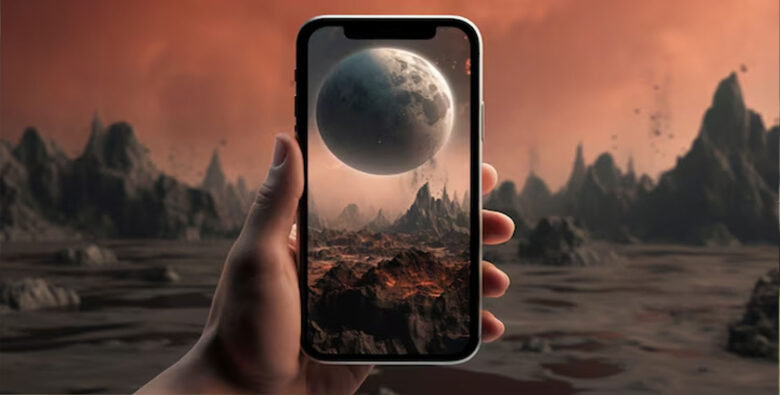In the age of social media, platforms like Snapchat have revolutionized the way we communicate and share information. With its unique visual storytelling features, Snapchat offers a dynamic way to explore a variety of topics, including our solar system. One engaging way to use Snapchat is by exploring the planets in order, from the closest to the Sun to the furthest. In this article, we will delve into the planets of our solar system, presenting them in Snapchat order, complete with fascinating facts and tips for creating engaging content for your followers.
The Solar System: A Brief Overview

Before diving into the planets, let’s take a moment to understand our solar system. Comprising eight planets, countless moons, asteroids, and comets, the solar system is a vast expanse of celestial bodies. The planets are divided into two categories: terrestrial (rocky) planets and gas giants. The terrestrial planets include Mercury, Venus, Earth, and Mars, while the gas giants are Jupiter, Saturn, Uranus, and Neptune.
The Planets in Snapchat Order
To explore the planets in Snapchat order, we will start from the closest planet to the Sun and move outward. For each planet, we’ll share interesting facts and tips on how to create engaging Snapchat stories.
1. Mercury
Distance from the Sun: 36 million miles (58 million kilometers)
Interesting Facts:
- Mercury is the smallest planet in our solar system.
- It has no atmosphere, leading to extreme temperature variations, with daytime temperatures soaring to 800°F (427°C) and nighttime temperatures plummeting to -330°F (-201°C).
- The planet’s surface is covered in craters, resembling the Moon.
Snapchat Tips:
- Use images or graphics of Mercury’s surface to illustrate its cratered landscape.
- Create a quick video or GIF showcasing temperature extremes by using emojis like ☀️ for day and ❄️ for night.
2. Venus
Distance from the Sun: 67 million miles (108 million kilometers)
Interesting Facts:
- Venus is often called Earth’s “sister planet” due to its similar size and composition.
- It has a thick atmosphere rich in carbon dioxide, creating a greenhouse effect that makes it the hottest planet, with temperatures around 900°F (475°C).
- Venus rotates very slowly, taking about 243 Earth days to complete one rotation.
Snapchat Tips:
- Use a filter to create a “Venusian” effect with a thick, hazy atmosphere.
- Incorporate fun facts in text overlays to educate your followers about the similarities and differences between Venus and Earth.
3. Earth
Distance from the Sun: 93 million miles (150 million kilometers)
Interesting Facts:
- Earth is the only planet known to support life.
- It has a unique atmosphere composed of 78% nitrogen and 21% oxygen.
- Earth is often called the “Blue Planet” due to its vast oceans covering about 71% of its surface.
Snapchat Tips:
- Share stunning images of Earth from space, highlighting its blue oceans and green landmasses.
- Create a poll asking your followers about their favorite natural landmarks on Earth.
4. Mars
Distance from the Sun: 142 million miles (228 million kilometers)
Interesting Facts:
- Mars is known as the “Red Planet” due to its iron oxide-rich surface.
- It has the largest volcano in the solar system, Olympus Mons, which stands about 13.6 miles (22 kilometers) high.
- Mars has two small moons, Phobos and Deimos, which are thought to be captured asteroids.
Snapchat Tips:
- Use Mars-themed stickers and filters to create fun posts about exploration missions, such as the Perseverance rover.
- Share a “Mars Trivia” segment where you quiz your followers on facts about the planet.
5. Jupiter
Distance from the Sun: 484 million miles (778 million kilometers)
Interesting Facts:
- Jupiter is the largest planet in our solar system, with a diameter of about 86,881 miles (139,822 kilometers).
- It has a Great Red Spot, a giant storm that has been raging for over 350 years.
- Jupiter has a powerful magnetic field and at least 79 known moons, including the four largest: Io, Europa, Ganymede, and Callisto.
Snapchat Tips:
- Create a time-lapse video showing the swirling clouds of Jupiter’s atmosphere.
- Use stickers or graphics to showcase its moons, asking followers which one they find most interesting.
6. Saturn
Distance from the Sun: 886 million miles (1.4 billion kilometers)
Interesting Facts:
- Saturn is famous for its stunning rings, made primarily of ice and rock particles.
- It is the second-largest planet, with a diameter of about 72,366 miles (116,464 kilometers).
- Saturn has 83 known moons, with Titan being the largest, even bigger than the planet Mercury.
Snapchat Tips:
- Use filters to simulate the view of Saturn’s rings.
- Share facts about its moons, encouraging followers to vote on which moon they would like to visit.
7. Uranus
Distance from the Sun: 1.8 billion miles (2.9 billion kilometers)
Interesting Facts:
- Uranus is unique for its sideways rotation; it rotates on its side, making its axial tilt about 98 degrees.
- It has a bluish color due to the presence of methane in its atmosphere.
- Uranus has 27 known moons and a faint ring system.
Snapchat Tips:
- Create a visual representation of Uranus’s tilt to explain why it rotates differently from other planets.
- Use a blue color filter to match the planet’s appearance and share cool facts about its unusual rotation.
8. Neptune
Distance from the Sun: 2.7 billion miles (4.3 billion kilometers)
Interesting Facts:
- Neptune is known for its deep blue color and is the furthest planet from the Sun.
- It has the strongest winds in the solar system, with speeds reaching up to 1,200 miles per hour (2,000 kilometers per hour).
- Neptune has 14 known moons, with Triton being the largest.
Snapchat Tips:
- Share a dramatic video about Neptune’s winds, possibly using wind emojis to emphasize the planet’s stormy weather.
- Incorporate a fun fact quiz about Neptune’s moons to engage your followers.
Creating Engaging Content
Visual Storytelling
Snapchat is all about visuals. Use eye-catching images and videos to tell the story of each planet. Utilize graphics, animations, and filters that reflect the unique characteristics of each planet. This approach not only makes your content more engaging but also helps educate your followers.
Interactive Elements
Engage your audience by incorporating polls, quizzes, and questions into your Snapchat stories. For instance, after sharing fun facts about each planet, ask your followers which planet they would most like to visit and why. This interaction can foster a sense of community among your followers.
Educational Aspect
While entertainment is key, educating your audience about the planets can create a deeper appreciation for our solar system. Use concise, interesting facts that can be easily consumed and remembered. This balance of fun and education will enhance the value of your content.
Consistent Theme
To maintain viewer interest, consider creating a consistent theme or series. For example, you could dedicate a week to “Planetary Wednesdays,” where each Wednesday, you post about a different planet. This approach builds anticipation and keeps your followers engaged over time.
Conclusion
Exploring the planets in Snapchat order is not only a fun and interactive way to engage with your audience, but it also provides a unique opportunity to educate others about our solar system. From Mercury to Neptune, each planet has its own set of fascinating features that can spark curiosity and interest.



